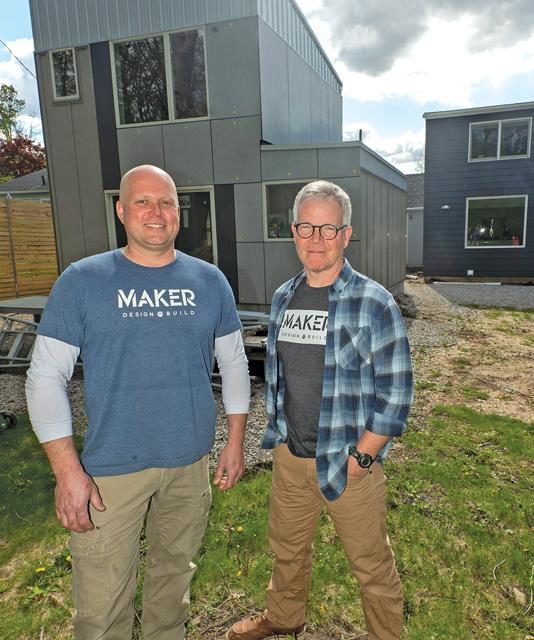Other cities and states have long permitted ADUs–small units attached or adjacent to existing homes–as a way to increase the housing supply. But though Ann Arbor first considered an ADU ordinance twenty years ago, it didn’t pass until 2016–and even then it included so many restrictions that so far only a dozen have been completed.
But the political landscape changed when what we call the Activist Coalition won control of city council last fall (“Elections Have Consequences,” March). In June, the new majority pushed through amendments that eliminated most barriers to building ADUs.
The biggest change is that all qualifying residential properties are now eligible to add an ADU, with the exception of properties in its lone mobile home park. The amendments also permit construction of freestanding buildings, strike parking and lot-size requirements, and drop a requirement that the owner live on-site.
Councilmember Lisa Disch, who serves as the liaison to the planning commission, believes that about 22,000 properties are now eligible. She expects that, of the affected property owners, between 1 and 2 percent will invest in this option over the next five to ten years. If her prediction is correct, that equates to about 440 units.
In other communities, ADUs have started slowly but now are making significant contributions to housing stocks. In 2018, Jessica A.S. Letaw, executive director of the nonprofit Building Matters, brought in Holly Huntley, a design builder from Portland, Oregon, to speak about the opportunities and technical challenges of adding ADUs.
Portland’s ordinance was established in 1998 and went through five revisions in twenty years. Only a handful of ADUs were built in the early years, but the city is now adding several hundred annually.
In Ann Arbor, twenty-three ADUs are currently under construction. “I feel extremely strongly that ADUs are a housing solution and ought to be part of housing inventory,” Letaw says. “I’m optimistic that the changes we are making will allow for us to develop a good, small but important, supply of housing in Ann Arbor.”
Steve Busch, co-owner of MAKER Design Build, recently completed an ADU that incorporates many green and innovative building techniques, including some that city inspectors had never encountered before. But the building department was “really easy to work with,” he says. “Everything in this house is utilizing twenty-first-century build technology.”
Disch says the city has done everything it can in regards to zoning. “The next step would be to provide incentives for building green,” she says. She would also like to see templates with ready-to-approve ADU plans that would be cheaper than today’s custom designs, “so that ADU construction is not just for the wealthy.” She envisions a complete package available with drawings, materials, and instructions, similar to the Sears kit houses from the early twentieth century.
Busch agrees. “I think if Ann Arbor is going to truly see ADUs happen, you’ve got to find ways to trim costs to make it more efficient however you can. Anything you can do to make the system more financially feasible will help.”
Brian and Megan Fenech were among the first homeowners to complete an ADU here. Brian, a lawyer, took on the role of general contractor, personally supervising the fifteen-month build of an ADU above their garage. He feels it is “a much more efficient use of their yard space.”
He checked in with neighbors before and after construction, and, while some had questions, “It was never anything negative. I explained to them that it was all allowable, and all the discussions since then have been very supportive.”
Since completion, they have rented the 599-square-foot apartment, and Brian says he “would be surprised if the neighbors even know if the tenants come and go.”


